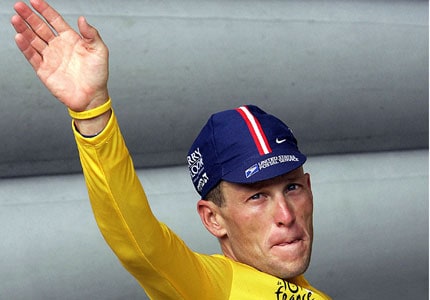Lance Armstrong: The downfall of a sporting icon
Once a symbol of perseverance in the face of the most incredible odds, Lance Armstrong now seems destined to go down in history as one of the most brazen dope cheats that sport has ever seen.
- Written by Agence-France Presse
- Updated: October 11, 2012 06:07 pm IST
 Once a symbol of perseverance in the face of the most incredible odds, Lance Armstrong now seems destined to go down in history as one of the most brazen dope cheats that sport has ever seen.
Once a symbol of perseverance in the face of the most incredible odds, Lance Armstrong now seems destined to go down in history as one of the most brazen dope cheats that sport has ever seen.
After sensationally conceding defeat in his fight to contest the charges against him in August, the Texan's world caved in a little bit further on Wednesday when the US Anti-Doping Agency published a damning report that laid bare his guilt.
Armstrong, they claim, was at the heart of "the most sophisticated, professionalised and successful doping programme that sport has ever seen".
"He was not just a part of the doping culture on his team," said the USADA. "He enforced and re-enforced it."
The revelations and inevitable repercussions look set to leave Armstrong's legacy in tatters but for all his detractors, there have been just as many admirers.
For his supporters, the doping allegations pale into comparison beside his battle with life-threatening cancer and the work of his charitable foundation, which he founded to help others living with the disease.
Doctors had given Armstrong a less than 50 percent chance of survival when he was diagnosed in 1996 with testicular cancer that had spread to his lungs and brain.
He persevered through surgery and chemotherapy and returned to cycling but was little known in his homeland when he won his first Tour de France title in 1999.
His years of dominance in the sport's greatest race raised cycling's profile in the United States to new heights and gave him a platform to promote cancer awareness and research.
The Lance Armstrong Foundation has raised almost $500 million (340 million euros, 310 million pounds) since it was created in 1997 and the foundation's chairman, Jeff Garvey, expressed support for Armstrong after the USADA vowed it would see him stripped of all seven of his Tour titles and banned from cycling.
"The leadership of the Lance Armstrong Foundation remain incredibly proud of our founder's achievements, both on and off the bike," said Garvey.
Even in the glory days, however, many were skeptical.
In 1999, it was a trace amount of a banned corticosteroid, which cycling officials explained by saying he was authorised to use a small amount of cream containing the drug to treat saddle sores.
After his 2000 Tour triumph, French authorities probed his US Postal Service team but brought no charges.
Critics seized on his friendship with Italian doctor Michele Ferrari, who was banned by Italian authorities over doping in 2002.
In 2004, a Texas promotions company balked at paying him a $5 million bonus for his sixth tour title because of doping allegations by European media.
In that court case, former team-mate Frankie Andreu and his wife, Betsy, testified that Armstrong told doctors during his cancer treatment that he had taken steroids and other performance-enhancers.
Two books published in Europe, "L.A. Confidential" and "L.A. Official", alleged he doped and in 2005, French newspaper L'Equipe reported that urine samples taken during the 1999 Tour that were later re-tested were positive for the blood-booster EPO.
Armstrong fought back with denials and even court action, before briefly launching a comeback in 2009, but in the end, the sheer weight of evidence against him -- including testimony from 11 former team-mates -- proved too much to withstand.
